Coulter relies on 1-2 topwater punch for covering water in the fall
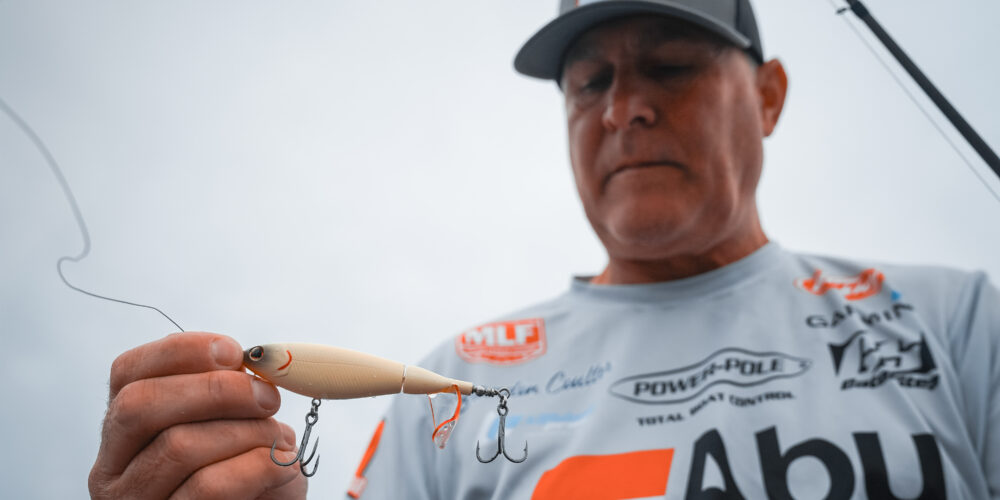
Fall bass fishing throughout most of the country can present some real challenges for anglers who just spent the summer focusing on warm-weather patterns. As air and water temperatures drop and fisheries begin experiencing the telltale signs of transition, everything changes – sometimes seemingly overnight.
While baitfish are often key to catching bass year-round, finding that bass forage in the fall – and paying attention to where the shad are positioned in the water column – is critical.
According to Mercury pro Brandon Coulter, how shallow or deep the shad are cruising is what tells you when it’s time to break out the topwaters.
“The shad movement in the fall is what keys the bite,” he said. “The shad are moving up. Even over deep water the shad are no longer on the bottom. One of the key things I think about is if (bass) are looking up or looking down. In the fall, they look up a lot because those shad are up higher in the water column. It’s really hard to get a fish that’s looking up to feed down, and it’s really hard to get a fish that’s feeding down to look up.”
And when the bass are “feeding up,” Coulter has a topwater one-two punch for catching them in bunches.
Tools of the trade
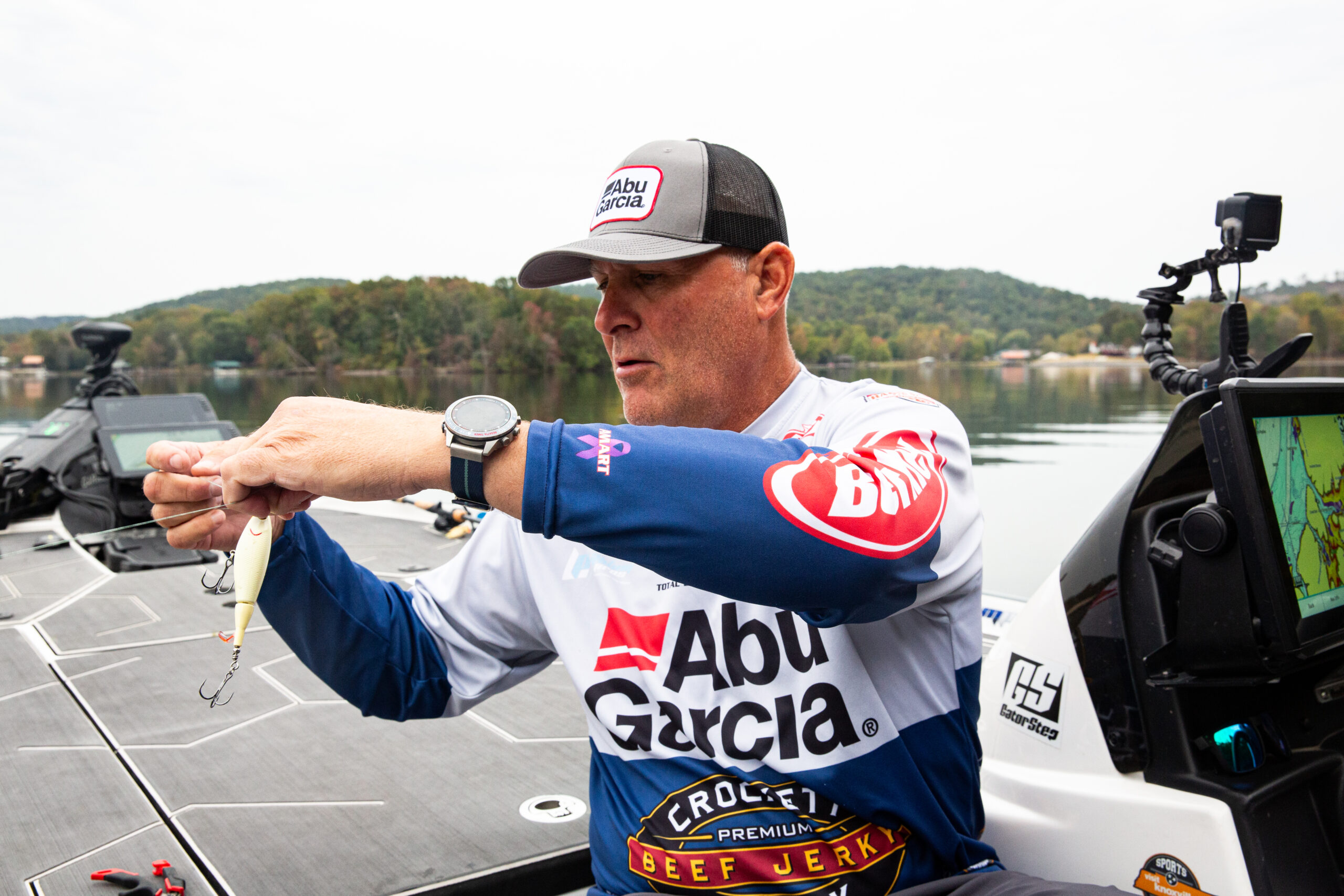
Generally speaking, Coulter leans on a rotation of just two topwaters for fall bassin’, especially on mid-South fisheries like Watts Bar, where he owns a lakeside house and spends much of his time. That arsenal includes a fast-moving search bait (usually a Berkley Choppo, occasionally a buzzbait) and a target-oriented bait he can work in place, like a popper or Berkley Swamp Lord popping frog.
The concept is simple: The prop bait is for covering water and getting a bait in front of as many fish as possible. The frog is for targets like overhanging trees, docks and grass or following up short strikes.
Coulter prefers the 105mm Choppo in most instances – bone, maverick and a clear option are the only three colors he needs – unless he’s fishing very specific conditions, or the fish are simply biting the 105 funny.
“I like the 105,” he says. “I go with the standard 90% of the time. The only time I’ll get off of that is if I’m noticing I’m getting swipers or followers or something that’s going to force me to throw the smaller (90mm) profile. I’ll go to a larger (120mm) profile if I’m in deeper water that’s crystal-clear and I’m trying to call one up.”
As for the secondary, “target-oriented” bait, it’s usually a popping frog for the versatility it offers in allowing for both popping and walking the bait, though it’s not always going to be a frog. That depends on the cover of the fishery and the species of bass he’s after.
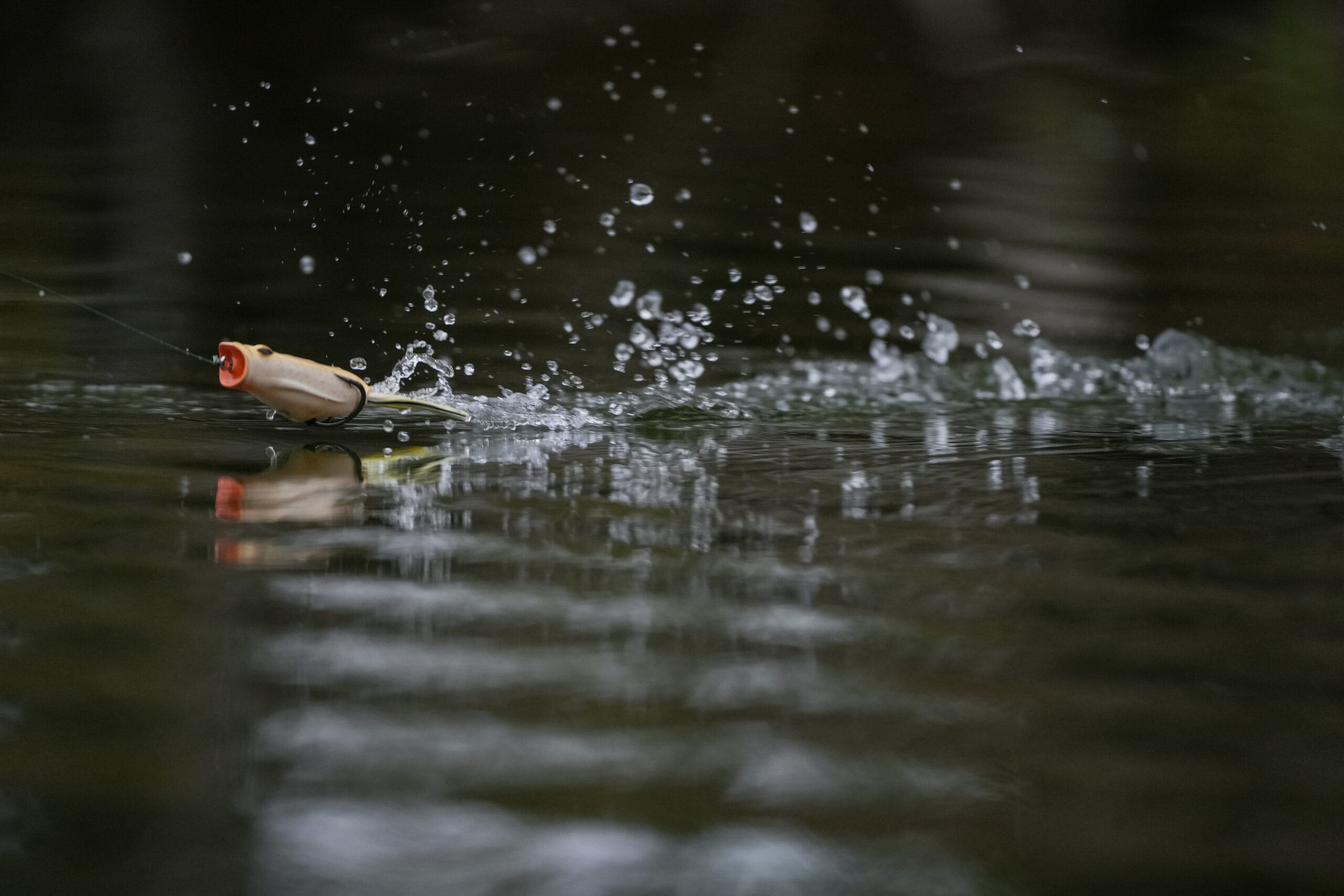
“The frog is lake-based,” he said. “If the lake has scattered grass every so often or it has docks I want to skip under, that makes the frog my secondary bait. If I’m in smallmouth territory or something like that, my secondary bait might be a Berkley J-Walker. It’s a little better for target-specific stuff or stationary stuff. If one blows up on a shad or one blows up on your Choppo, you want something you can keep in the strike zone longer.”
As is often the case in the fall, it’s best to keep bait selection simple; a fast-moving search bait and something target-oriented is all you need.
Finding your pattern
Find the bait, find the bass. It’s a simple, nearly universal rule in bass fishing – maybe even more so in the fall.
As the leaves begin to change colors, you can count on baitfish moving shallower and into pockets, coves and creeks. Bass move with them, corralling their prey and often pushing big schools of shad up against the bank. That’s the best place to look for a hot fall topwater bite.
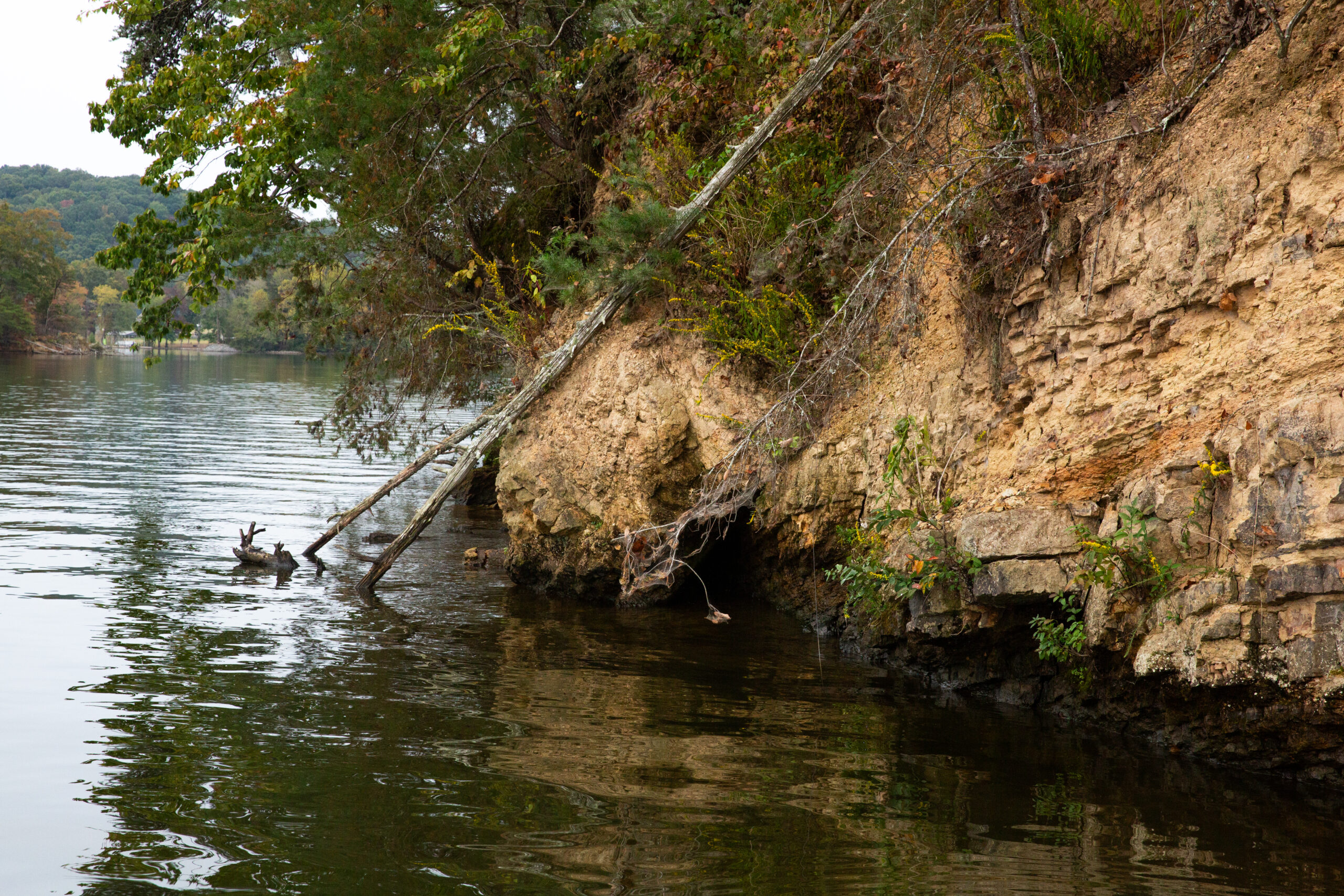
Dialing in a pattern is as simple as putting your search bait of choice to work and just paying attention.
“There’s certain baits that elicit a reaction,” Coulter said. “Sometimes bass commit and sometimes they don’t, but it still clues you in to where the fish are. Any kind of search bait for me needs to be a bait that I have a lot of confidence in that’s going to elicit a reaction one way or the other. It’s not always necessarily that they eat it, but they’re going to put me in the right area and let me dial it in from there.”
For instance, Coulter might start his search on a rocky bluff wall, working his way down the bank through transitions to chunk rock, then gravel, then red clay with laydowns and overhanging trees – always in areas where he sees baitfish on his electronics. Generally, bass will prefer to hunt around certain types of cover and bottom compositions, allowing you to simply take note of where you’re getting strikes. If your bites tend to mostly come from areas with a lot of chunk rock, you can begin to dial in a pattern and narrow your search.
Coulter paints a picture based off one of his recent outings.
“I started on rock and immediately got bit,” he said. “I went away (from the rocky bank) and went to wood and didn’t get any bites. I got a really good bite on rock and then it transitioned to wood and shallow red clay and then the bites just quit. I started to transition back to rock and got in a pocket and got a good blowup on the Swamp Lord behind a dock.”
In situations like that, the course of action seems obvious – target rock until you simply aren’t getting bites.
Water temp is just a number
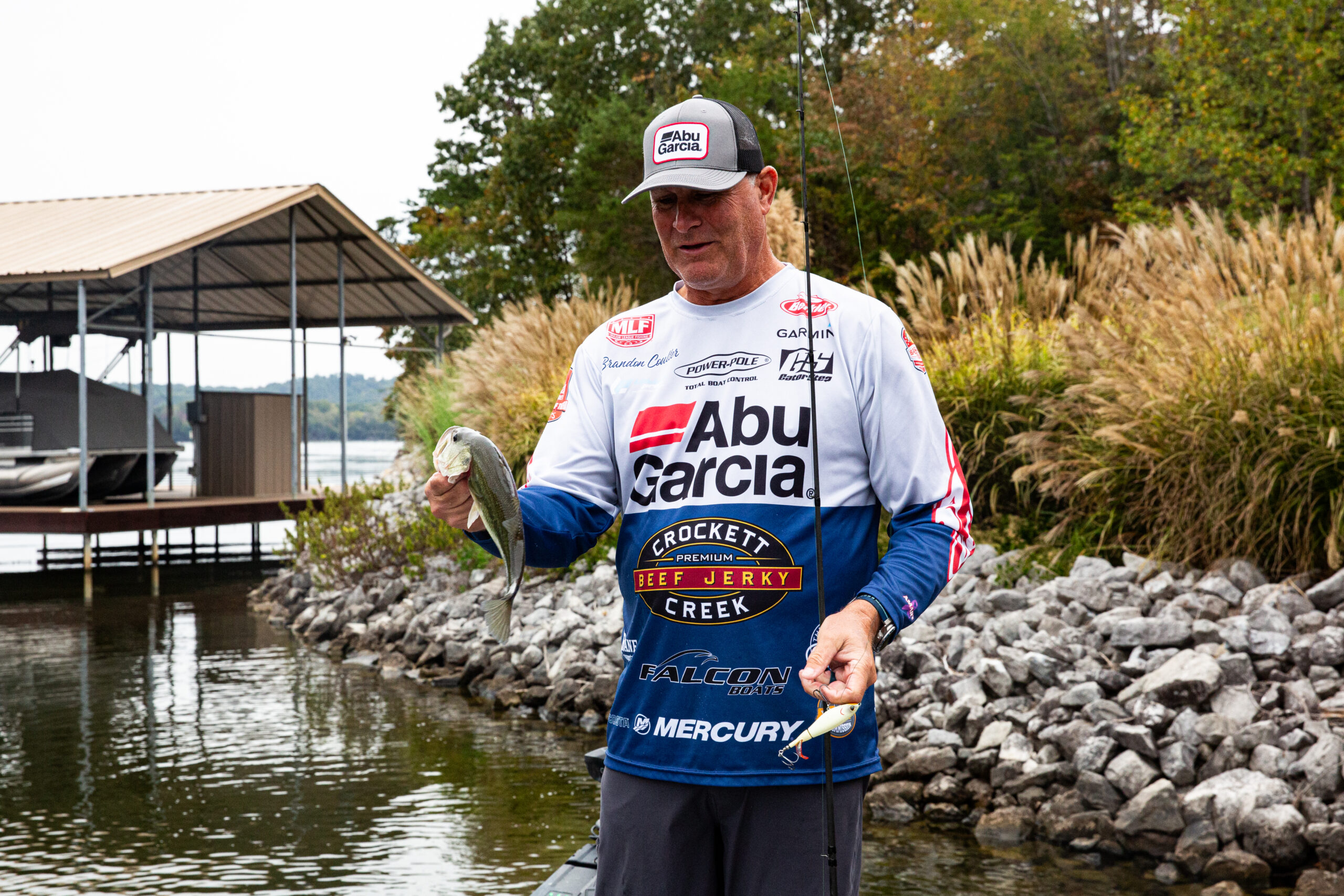
Every bass angler has his or her own ideas about what water temperatures are best for getting bass to eat a topwater. For Coulter, it’s not as much about the number as it is about the trend.
“Water temp is very dependent on which direction it’s going,” he says. “Let’s take 50 degrees, for example. You can catch fish on every single topwater in your box in 50-degree water – if it was 44 the week before. If it was 70 the week before and it’s 50 now, you might as well keep them in your box.
“It’s the progression of water temps. In the fall, it’s always dropping. As long as it’s steady – as long as there hasn’t been a big, big drop of six or seven degrees overnight – the fish are expecting that. If it gets down a bit and then you have two sunny days, the topwater’s in play, even if the water is 49 degrees. It’s the transition of the water temperature more than the actual water temperature.”
If the conditions are right, there’s an opportunity to have a banner day watching bass blow up on topwaters. Just follow Coulter’s approach and find out for yourself.